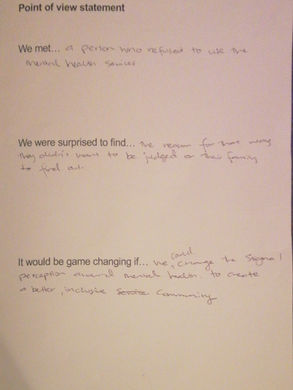
rEFLECTION
Week 3.

What am I finding challenging? Initiating the conversation. I do not like to disturb people
Where do I feel comfortable to lead? Planning for the interception interviews.
What tools did I find most useful? The conversation guide and capture sheet were very helpful. It helped with how I progressed through my conversations.
What are the challenges helping me learn about myself? To have confidence in myself and initiate conversations because people are actually wanting to help.
What would I do differently if I had another chance? Dig deeper. Ask why more often.
What did I do that worked really well? Building rapport. I love talking to people and getting to know them.

This week we unpacked all of the information we found. Orange = what was good. Pink = what was bad. Yellow/Green = Suggestions. As a group, we got a diverse range of responses. Some had more in-depth conversations and received really good feedback.

We found interesting:
-
Time – Books aren’t long enough. The time between the initial booking to the actual booking is too long.
-
Stigma – People don’t want to be judged.
-
Where the students receive their information – from the website. Online services are too difficult.
Clustering the same type of information
-
Time.
-
Social media is a viable way to gage students.
-
Stigma.
-
Don’t know about the services.
-
Students found from word of mouth rather than any other platform.
-
Local GP.
-
Online services aren’t convenient.
Titles
-
We found that time is a huge factor for students
-
Wait time
-
Engagement time
-
-
Students want more engagement through different platforms
-
Students need to know more details of Mental Health services.
-
Some students don’t want to use the Mental Health service because they don’t want to be judged.
Brainstorming.
Six Thinking Hats.

Images source: https://uxdesign.cc/brainstorm-79e51f20f313
Walt Disney’s Creative Strategy.

Images source: https://uxdesign.cc/brainstorm-79e51f20f313
Point of View statements.
Design Thinking |
Tim Brown
Human-centred
Human-centred design is to better understand what the person is going through. It’s great to design something with people in mind but if you do not involve the people you are designing for, you may not solve the problem they are facing.
Learning by making
Prototyping early on allows people to test their ideas and see if they will fail early on in their project. If you just hypotheses throughout the project and don’t test it, in the end there might be something you did not calculate for and don’t have time to fix it. Test as you go.


















